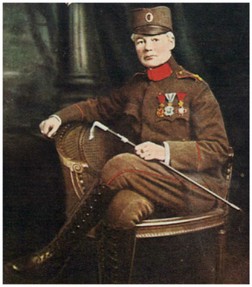 Unfortunately, those injuries were still sufficient to keep her from full health and mobility. She really had become a liability out on the field, but she still had her leadership and nursing skills to fall back upon.
Unfortunately, those injuries were still sufficient to keep her from full health and mobility. She really had become a liability out on the field, but she still had her leadership and nursing skills to fall back upon.
Two years earlier, Flora had been turned down by a nursing corps for lack of qualifications. Now Sergeant-Major Sandes was placed in charge of a whole hospital. For the next six years, she ran it with military precision, becoming reunited with Emily Simmonds along the way.
In 1918, Flora received her final promotion into the officer class. She was hitherto Captain Flora Sandes, the first woman ever to achieve such a commission.
Even after the end of the First World War, the hospital kept on going, as wounds did not magically heal with the Armistice. In fact, Captain Sandes was not demobilized until October 1922, four years after the last shots were fired in World War One.
But she did not go home. Flora remained on in Serbia for the next five years. In May 1927, she met and married General Yuri Yudenitch, a Russian officer in the White Army stationed in Serbia. The couple lived for some time in France, before returning to Belgrade. On this occasion, Flora drove Serbia's first ever taxicab.
In April 1941, when the German Army invaded Yugoslavia, the couple were recalled into military service. Before they could take up their posts, the couple were captured by the Gestapo.
Their internment in a prisoner of war camp was only brief, but it was enough to destroy the health of Yuri Yudenitch. Despite his wife's care, he died in September 1941.
By now, it was too much even for a stout spirit such as Captain Flora Sandes-Yudenitch. On the next flight to Britain, she finally returned home. She lived out her final years in Suffolk, on the east coast of England.
In November 1956, Flora Sandes-Yudenitch died peacefully in her bed aged eighty years old.



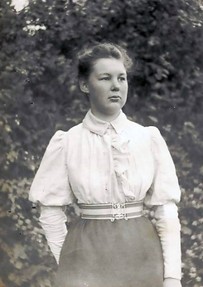 Flora Sandes had always been a bit of a tomboy. Even as a child, she'd demanded that she be taught to ride a horse and shoot a gun, just like the boys.
Flora Sandes had always been a bit of a tomboy. Even as a child, she'd demanded that she be taught to ride a horse and shoot a gun, just like the boys.



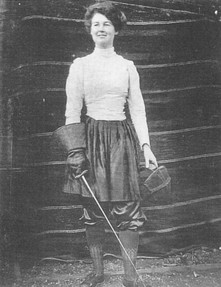 It was an American lady named Mabel Grouitch, who provided passage for Flora Sandes into the theater of war.
It was an American lady named Mabel Grouitch, who provided passage for Flora Sandes into the theater of war.


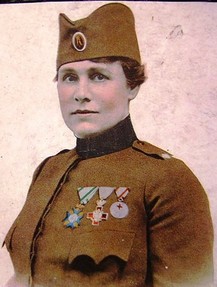 Even while nursing, Flora Sandes was not content to remain safely behind military lines in the field hospital. Throughout 1914 and early 1915, she frequently made trips to the battlefields themselves, escorted by friendly Serbian soldiers.
Even while nursing, Flora Sandes was not content to remain safely behind military lines in the field hospital. Throughout 1914 and early 1915, she frequently made trips to the battlefields themselves, escorted by friendly Serbian soldiers.


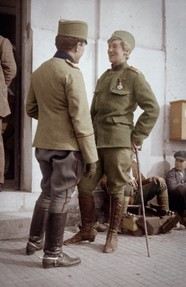 For the next year, Private Sandes proved her worth time and again on the battlefield. Within weeks, she had been promoted to the rank of Corporal.
For the next year, Private Sandes proved her worth time and again on the battlefield. Within weeks, she had been promoted to the rank of Corporal. 

 Unfortunately, those injuries were still sufficient to keep her from full health and mobility. She really had become a liability out on the field, but she still had her leadership and nursing skills to fall back upon.
Unfortunately, those injuries were still sufficient to keep her from full health and mobility. She really had become a liability out on the field, but she still had her leadership and nursing skills to fall back upon.





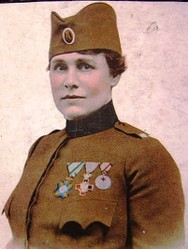

 St Tydecho's Churches in West Waleson 09/03/2014
St Tydecho's Churches in West Waleson 09/03/2014
 Goodies for an Outlander Premiere Partyon 03/06/2015
Goodies for an Outlander Premiere Partyon 03/06/2015
 Holocaust Memorial Day Interview with Rainer Höss, Grandson of Rudolf Architect of Auschwitzon 01/24/2015
Holocaust Memorial Day Interview with Rainer Höss, Grandson of Rudolf Architect of Auschwitzon 01/24/2015
 Romantic Valentine Gifts for an Outlander Fanon 01/16/2015
Romantic Valentine Gifts for an Outlander Fanon 01/16/2015

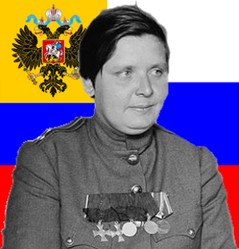

Comments
Dear JoHarrington,
This is just a note to inform you that one of the photos you are using to depict Flora Sandes is actually that of Ruth S. Farnam who was an American in Serbia during the Great War. She authored “A Nation at Bay” written in 1918. The photo I am referring to is your main photo for this piece. Since you are a historian, I thought that you would want to know.
Kind regards,
Julia
Lisa - It helps that I'm a historian to begin with, but then I go on voyages of discovery in history books. Occasionally a gem of a story like this is just stumbled upon.
I'm glad that you enjoyed reading about Flora Sandes.
Kate - You are very welcome. I wasn't at all surprised that she was Yorkshire, and even less so that her parentage was Irish. Hefty combination there!
Great Story! Where did you find out about her? You are discovering some very unusual people.
than k you enlightening us again to another of histories hidden heroines. Why am i not surprised she is from Yorkshire?
I'm glad that you thought so. Flora Sandes was a fascinating lady, and very stubborn in what she wanted. In many ways, she shifted the world to suit her own world view, and it worked.
Mind you, opportunities came her way and she grasped them. Fair play to her!
Apparently they're making a bit of a resurgence in Albania right now. Which says a lot about gender divisions still applicable there.
Glad that you liked the article. Though I'm sure that there's a joke in there somewhere about British women forgetting 'sworn virgins'...
Great article. I'd forgotten about the 'sworn virgins'...